New products at Crocus
by Sarah - April 22nd, 2010.Filed under: Crocus, New Products.
New products at Crocus
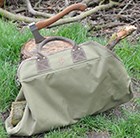
log-sack £34.99
This log sack is an easy and clean way to transport logs from the garden to the hearth. It has classic good looks on the outside, but is lined with rubber, which helps keep it free of dirt – even if the logs are damp.Measures: 90 x 44cm
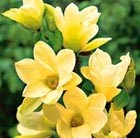
magnolia £29.99
Position: full sun or partial shadeSoil: moist, well-drained, neutral to acidic soilRate of growth: averageFlowering period: April to MayHardiness: fully hardyLarge, elegant, creamy yellow, goblet-shaped flowers open from yellow buds in April and May on bare branches. This magnolia forms a natural dome shape and has spreading, horizontal branches that give it an elegance even when not in flower. This rare variety makes a superb specimen tree for a small garden. It is best grown in fertile, well-drained soil that is slightly acidic. A great tree for a woodland garden where it can be sheltered by other trees – it does not like exposed, windy sites.Magnolias can be a little tricky to grow to begin with but the rewards are well worth it. The main thing is to avoid planting in a frost pocket as this will damage the emerging buds. The same is true for exposed and windy spots. Once established, magnolias are fairly low maintenance though newly planted trees benefit from a good, deep mulch in spring to get them started.Garden care: Requires minimal pruning. Remove any broken, diseased or crossing branches in midsummer. The best time to plant is in April, adding plenty of peat to the planting hole, in a sheltered spot. Mulch in spring with manure and leafmould, especially on dry soils.

vegetable-grilling-set £29.99
Create delicious vegetable treats on the BBQ with this grilling set. You will get 6 stainless steel skewers, which can be threaded with peppers, mushrooms and tomatoes. The set also includes 6 grilling rings that can be used to stop rounded vegetables like potatoes and bell peppers rolling off the hotplate. There are also 3 packets of seeds (1 for tomatoes, 1 for bell peppers and 1 for tyme), that have growing instructions and 3 metal plant labels so you will be able to keep track of what’s what.
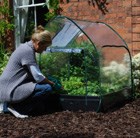
pop-up-cloche-cover-for-grow-bed £29.99
The cover springs into shape, thanks to the zinc wire frame, negating the need for assembly. Supplied with 8 metal anchor stakes. Made of UV stabilised clear PVC, the cover features a zip access door and large top vent with integral insect mesh panel and roll up/down cover. Can be used independently of grow bed if required. Length: 98cm Width 98cm Height 120cm
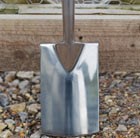
fiskars-stainless-steel-border-spade £24.99
This top-of-the-range border spade is made from non-stick polished stainless steel which means efficient digging even in heavy soils. The beech wood shaft and polypropylene handle molded for maximum comformt means you’ll get less blisters too!The best quality Fiskars (wilkinson sword) border spade you can buy. The stainless steel is covered by a manufacturers lifetime guarantee.Measurements:Length 91.4cmWidth of blade 14cmHeight of handle 65cm
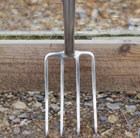
fiskars-stainless-steel-border-fork £24.99
This top-of-the-range border fork is made from non-stick polished stainless steel which means efficient digging even in heavy soils. The beech wood shaft and polypropylene handle moulded for maximum comfort means you’ll get less blisters too!The best quality Fiskars (wilkinson sword) border spade you can buy. The stainless steel is covered by a manufacturers lifetime guarantee.Measurements:Length 90.5cmWidth of the head: 10.5cmDepth: 17cm
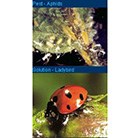
ladybird–lava-aphid-control £22.99
The ladybird you will receive is Adalia bipunctata, a native to the UK.This ladybird feeds on different types of aphids (greenflies) and can be used on a wide range of plants, indoors and out. Ladybird larvae can eat up to 100 aphids a day and at this stage of their lifecycle are winged, which means they will most likely stay close to their food source. The larvae continue to eat until they are ready to pupate and become adult ladybirds. Once adults they can lay up to 20 to 50 eggs a day, which in turn hatch and eat the aphids. Adults also have a huge appetite and can devour large numbers of aphids.How to apply Ladybird Lava: Order your Ladybirds Lava only when you have aphids on your plants.Just Ladybirds can be introduced indoors or outdoors when the temperature is above 10°C. Place the larvae as close to the centre of the aphid infestation as soon as you receive them. If you have to wait then store them in the fridge at 8-10°C for 1-2 days maximum.If new infestations of aphids appear or the one being treated is too large, it may be necessary to add more Ladybirds. The number of larvae needed to treat an aphid infestation will vary on the number of aphids present. A general guideline is to use 3-5 ladybird larvae per infested plant.
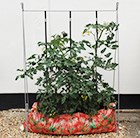
the-grow-bag-frame £19.99
Made in the UK from recycled steel, this clever new frame is easy to assemble using a unique, clip fixing system. The plastic straps provide a strong vertical plant support system, which is ideal for growing taller plants like tomatoes and runner beans. The lower steel cross bar draws the bag upwards, making a deeper bed for roots to develop and it also creates voids that make it easier to apply water and fertiliser. Once erected it is quite sturdy and can even be gently moved around. After use it can be dismantled and folded flat for easy storage until next time.Dimensions:Height 120cmDepth 30cmWidth 90cm
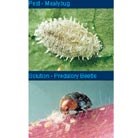
mealybug-killer-crytolaemus £19.99
For glasshouses or conservatories onlyMealybugs cause damage to many plants. They are soft bodied insects and are covered in a white waxy material, it is because of this appearance that they get their name, mealybugs. There are different species which can be distinguished by the length of their tail filaments but they are all oval shaped. The most common species are the citrus mealybug, glasshouse mealybug and long tailed mealybug. Nymphs and female adults cause damage. Most feed on higher parts of plants but some extract food from roots. Biological control of mealybug is with the predatory beetle, Cryptolaemus. The adults and larvae of these beetles eat the mealybug completely. The larvae are similar in appearance to the mealybug so be careful not to remove! The beetle should be introduced once the mealybug are observed and a second treatment applied later to ensure the number of predators is high enough to compete with the mealybug population.How to use Crytolaemus: Cryptolaemus require a minimum temperature of 16°C They establish better in longer, brighter days. Cryptolaemus adults should be released from their bottles away from open windows or frames. They are attracted to light and could fly out!
tea-set £19.99
hydrangea £17.99
bbq-herb-set £14.99
pesto-set £14.99
mojito-set £12.99
aphid-killer-lacewing-larva £12.99
Plus…
13 products from Garden | perennial
5 products from Home
2 products from Garden | shrub
2 products from Garden | climber






